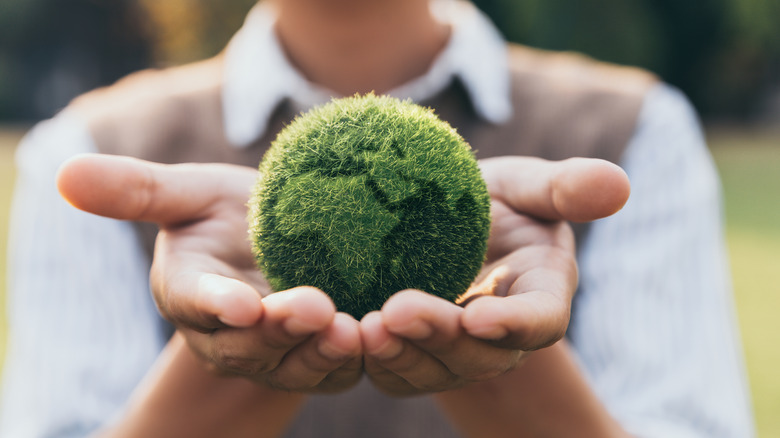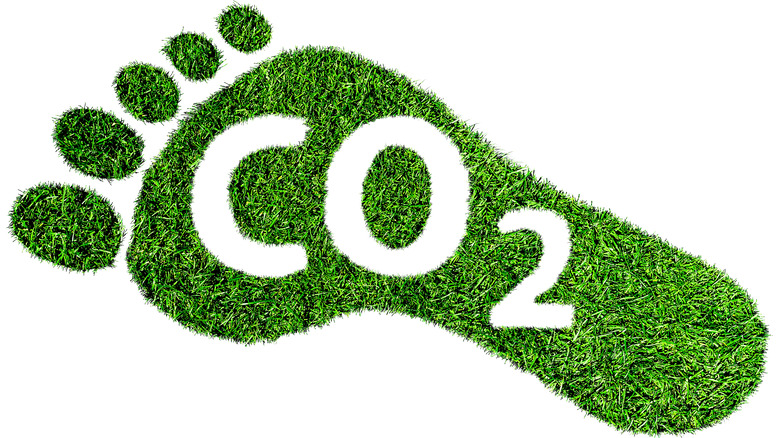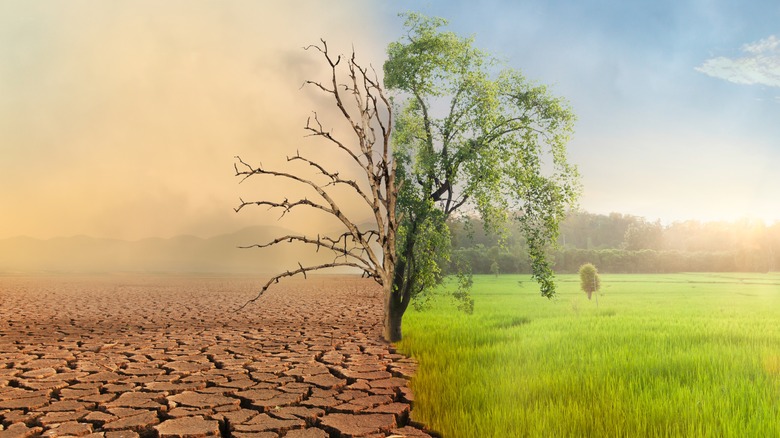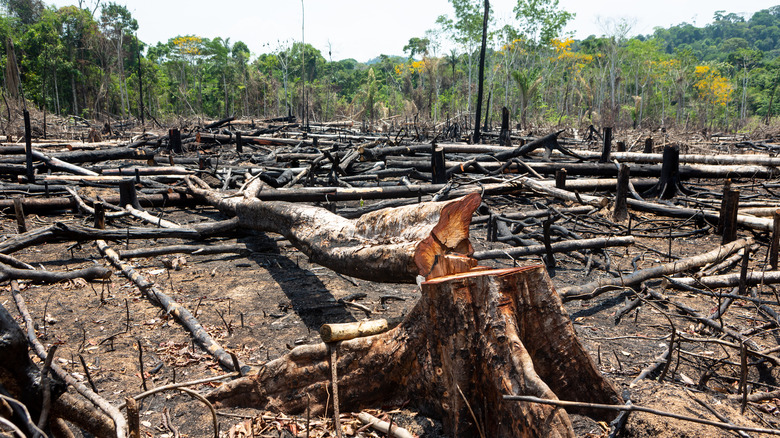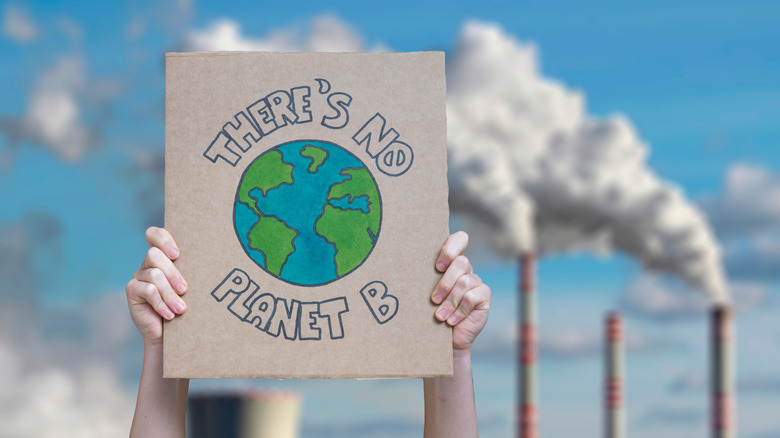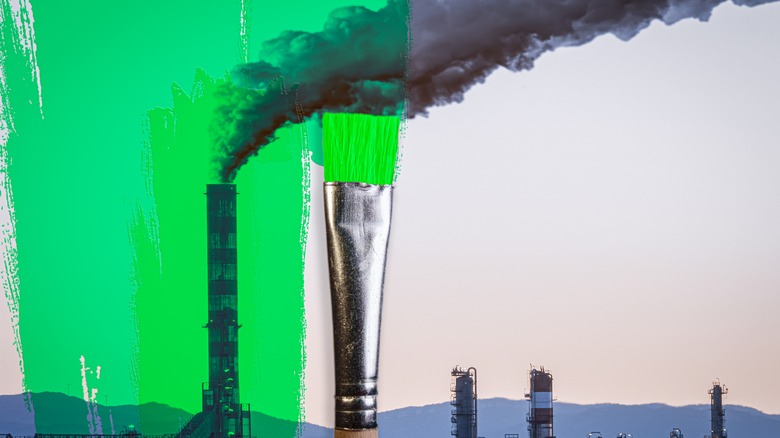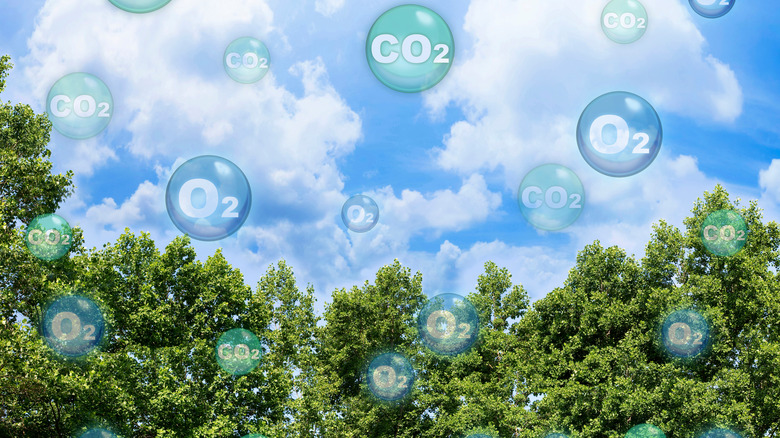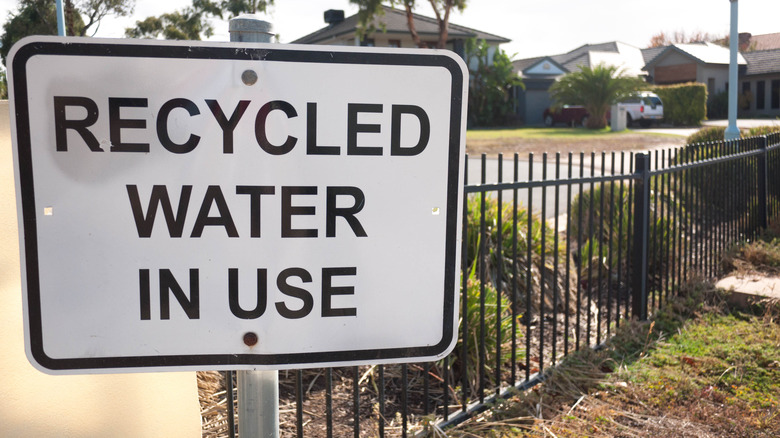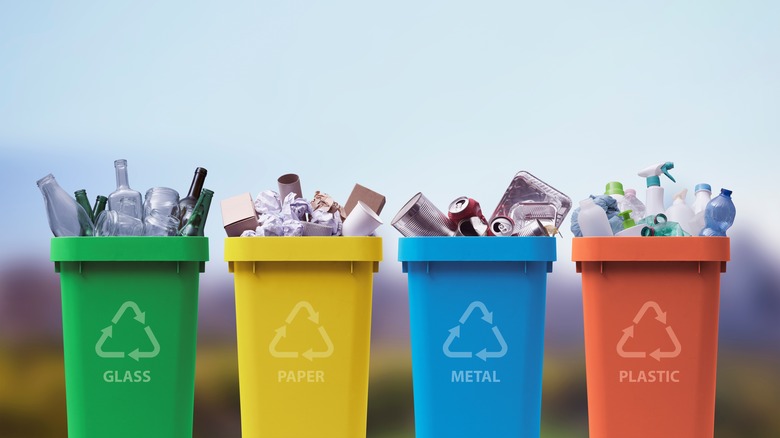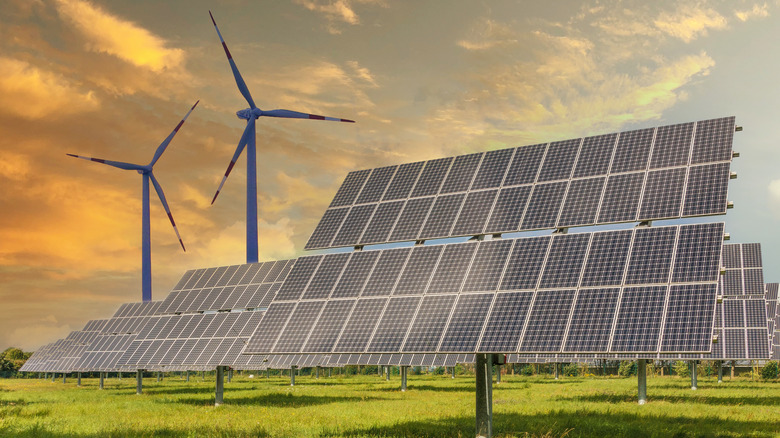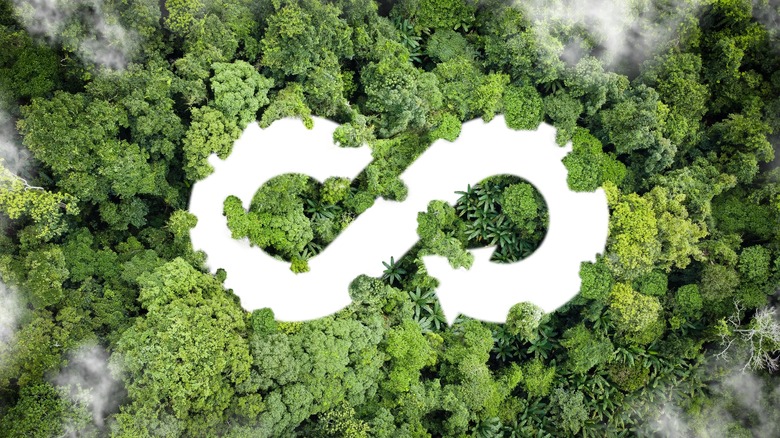Here's The Lingo You Need To Know When Starting Your Sustainability Journey
It's hard to look at headlines without encountering talk of climate change. The latest report from the United Nations' Intergovernmental Panel on Climate Change found that human-made changes in climate are responsible for the negative impacts and subsequent damages to both people and the environment. As these extremes in weather and climate continue, the planet and humans will experience irreversible changes that will seriously challenge our ability to survive under these new circumstances.
If this future reality has you concerned, you're not alone. Many people wonder how they can do their part to help mitigate the worst of these effects. The first step? Learning the lingo. We've got all the vocab you need to get started living a more eco-conscious life.
Carbon footprint
The Nature Conservancy defines your carbon footprint as the number of greenhouse gases generated by your individual actions. People in the United States have one of the biggest carbon footprints in the world — nearly four times the global average. Currently, the average American is responsible for generating around 16 tons of carbon per year. Experts predict that people around the world will need to reduce their carbon expenditures to just 2 tons per year by 2050 for humans to avoid the worst effects of climate change. Find out exactly how much carbon you emit by using the Nature Conservancy's Carbon Footprint Calculator.
Climate change
Although the terms "climate change" (or the more urgent language "climate crisis") and "global warming" are often used as synonyms, they have separate meanings, says NASA. The United Nations defines climate change as pattern changes in weather and temperatures over long periods of time as well as the effects these phenomena have on life on Earth.
As the planet warms, climate and weather extremes can happen with greater frequency and severity. Today nearly all disasters are considered climate-related (per the United Nations), and the consequences are devastating: Each year climate change costs the world economy $520 billion, forcing 26 million people to live in poverty due to these catastrophic events.
Deforestation
When forests are purposely cleared for roads, urban development, logging, or growing food, this process is called deforestation (via Treehugger). The main culprit is industrial-scale agriculture, including for palm oil, soy, rubber, and cattle ranches. Fires — both intentional and natural — can also cause deforestation.
Forests are home to some of the world's greatest biodiversity (meaning a variety of species) and help pull in greenhouse gases that would otherwise remain in the Earth's atmosphere. These carbon sinks retain around 2.6 billion tons of carbon dioxide every year (per Treehugger). But after being burned or cut down, trees off-gas carbon instead of absorbing it.
Fossil fuels
Fossil fuels come from decomposed animals and plants that have been buried under layers of rock (via National Geographic). Because they contain carbon and hydrogen molecules, they can be combusted for energy. Over 80% of the energy generated in the United States comes from three fossil fuels: oil, natural gas, and coal.
Because these materials are extracted from ancient sources, they cannot be replenished for millions of years. Worse, during the last 20 years, three-quarters of all human-made emissions have come from burning fossil fuels, releasing harmful greenhouse gases like carbon dioxide and methane into the atmosphere.
Global warming
Global warming, explains NASA, is the heating of the Earth's surface due to human actions. Since around the turn of the 20th century, anthropogenic activity has caused the planet's average temperature to rise by nearly two degrees Fahrenheit, and each decade, that number will continue to go up by 0.36 degrees Fahrenheit.
Scientists agree that the current global increased temperatures are caused primarily by the burning of fossil fuels (via United Nations). When combusted, these substances increase the number of greenhouse gases in the atmosphere, further warming the planet.
Greenwashing
Companies that market themselves as environmentally conscious while actively engaging in unsustainable activities practice greenwashing (via Earth.org). The origin story of the term explains perfectly how the process works: Environmentalist Jay Westerveld noticed an incredible amount of waste in hotels. Those same hotels had signs asking people not to launder their towels daily, giving guests a false sense that the hotel cared about its environmental impact. Westerveld's landmark 1986 essay exposed the "save the towel" movement for what it really was — a lip-service marketing campaign, not a strategy to lower water or energy consumption.
Greenhouse gases
According to the U.S. Environmental Protection Agency (EPA), greenhouse gases trap radiation from the sun in the Earth's atmosphere. The carbon dioxide released during the burning of oil, gas, and coal is the largest source of greenhouse gas. The best way to reduce carbon dioxide in the atmosphere? Stop combusting fossil fuels.
The second most common greenhouse gas is methane, and although it accounted for a little over 10% of all human-made emissions in 2020, it's far more efficient at keeping the heat in, making it 25 times stronger than carbon dioxide.
Grey water
Tens of millions of people around the world live in drought-stricken areas (via EarthSky). One tool to combat this is grey water, notes the Water Education Foundation. Grey (or gray) water helps reduce the pressure on local water supplies by using untreated water from your bathtub, sink, or even your washing machine to water fruit trees and non-edible plants. Just one load of laundry could provide between 15 and 40 gallons of water that could keep plants and trees alive during outdoor watering restrictions.
Recycling
When materials that would otherwise end up in landfills are repurposed, the EPA defines this process as recycling. Recycling can lower your carbon footprint by using fewer newly collected and processed raw materials, reducing greenhouse gas emissions and water usage (via ACO Recycling).
But not all recycling is equal: Grist reports that just 5% of plastic waste was recycled in the U.S. in 2021. Environmental justice expert Jim Puckett told The Guardian, "It's really a complete myth when people say that we're recycling our plastics." Other materials like paper (including cardboard), glass, aluminum, steel, concrete, and hemp can be effectively recycled (via Reader's Digest).
Renewable energy
In contrast to non-renewable energy generated from fossil fuels, renewable energy comes from naturally occurring, rapidly replenishing sources including wind, sun, geothermal heat, and hydropower (via United Nations). These renewable sources are abundant, not finite like fossil fuels, and they emit no harmful greenhouse gases.
Most emissions worldwide come from the burning of coal, oil, and gas. Renewables present a major opportunity for consumers to address their carbon footprints and help fight climate change. Today, in most nations, buying renewable energy is less expensive than non-renewable and provides threefold the number of jobs the fossil fuel industry does.
Water scarcity
You don't have to live in a desert to experience water scarcity (via UNICEF). The lack of access to safe drinking and bathing water as well as enough water for sanitation is common across the globe, but most heavily impacts women and children. Water scarcity can occur because of poor resource management, contamination, or local conflict, as well as infrastructure and distribution problems. Both human behavior and the effects of climate change can cause water prices to skyrocket and can wreak havoc on sewage lines, increasing the circulation of potentially fatal diseases like cholera.
Zero waste
The Zero Waste International Alliance defines a zero-waste life as both an ethical and economic practice. The philosophy believes in turning trash into treasure, conserving natural resources, eliminating waste, avoiding overuse, and keeping materials out of landfills and incinerators. These sustainable patterns of consumption aim to keep human, animal, and planetary health top of mind.
Because the idea of "zero" waste can seem restrictive or unattainable, a more accessible term describing the same concept is the circular economy (via Going Zero Waste). Either way, the goal is the same: making trash history.
